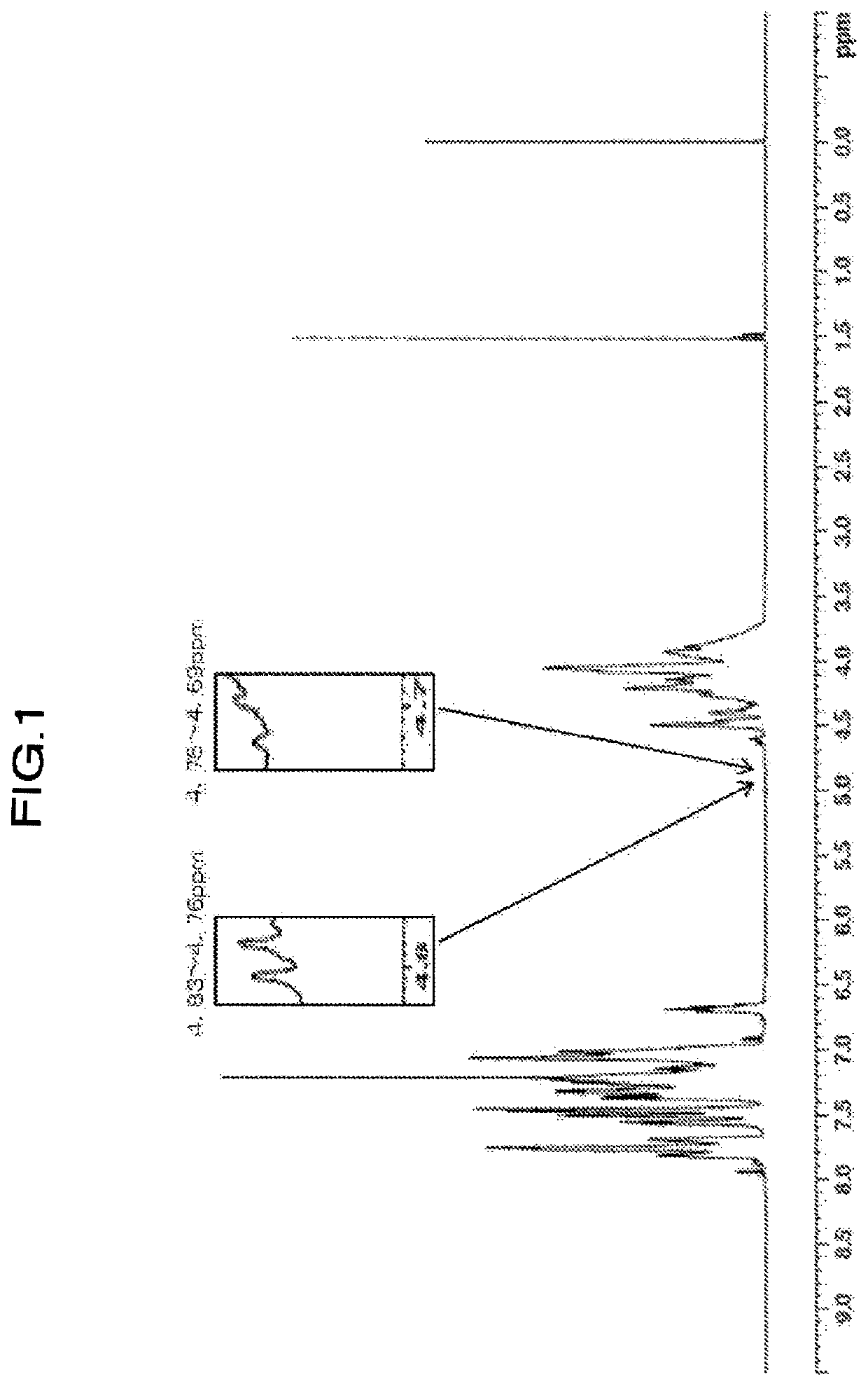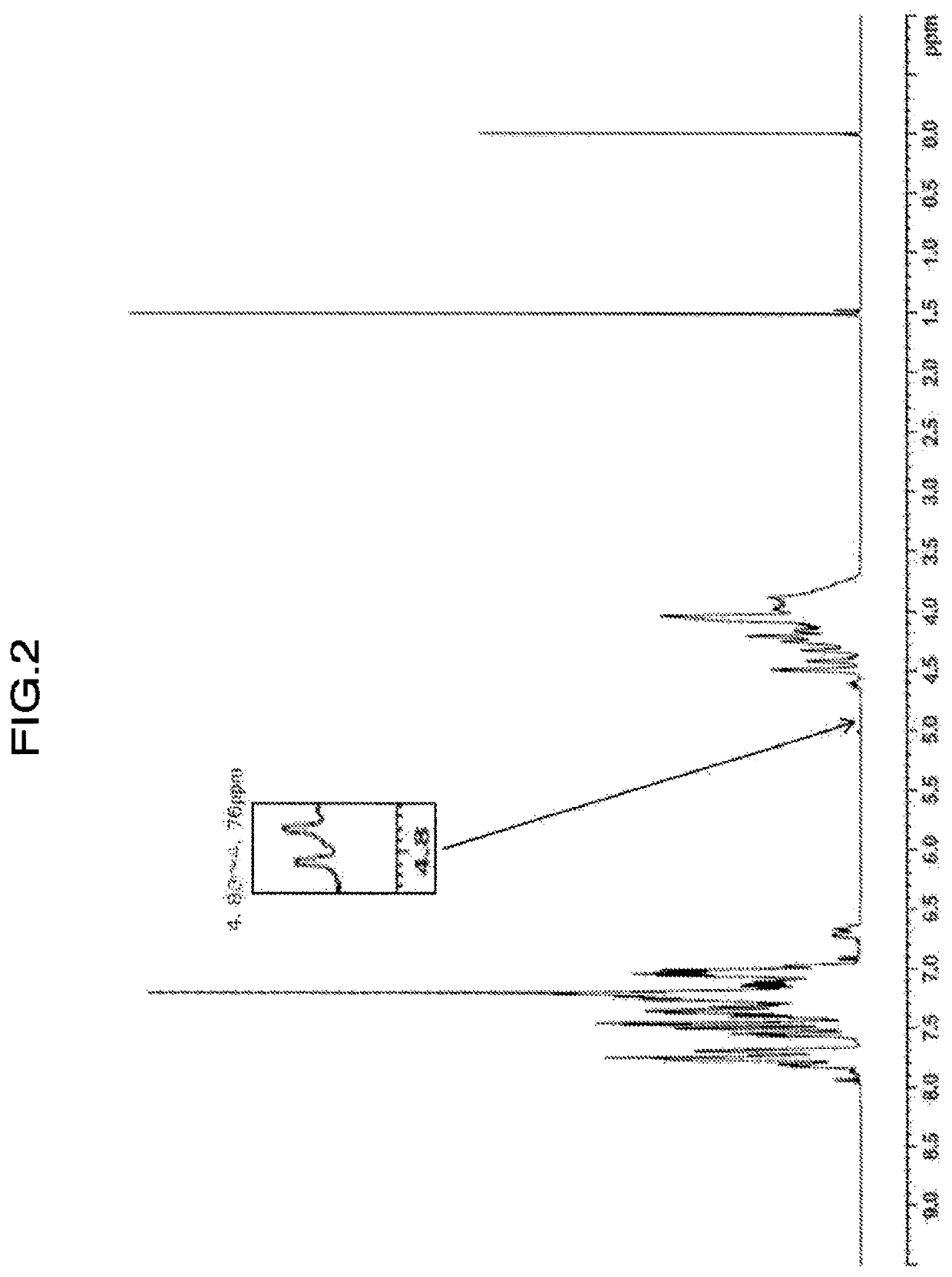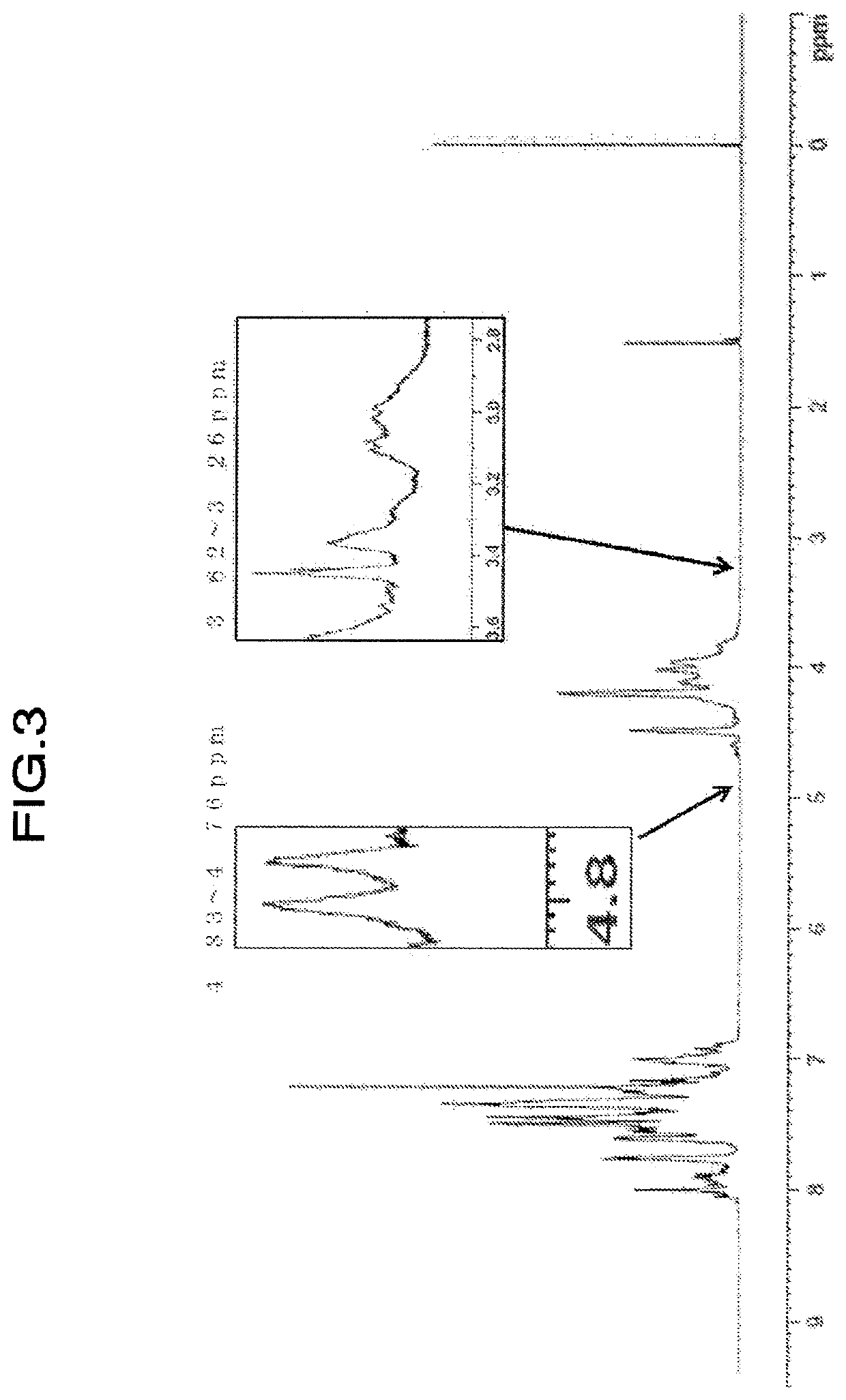Polycarbonate resin, method for producing same, and optical lens
a technology of polycarbonate resin and optical lens, which is applied in the field of polycarbonate resin, can solve the problems of poor molding processability, high material cost, and low productivity, and achieve the effects of high moisture resistance, high refractive index, and low abbe number
- Summary
- Abstract
- Description
- Claims
- Application Information
AI Technical Summary
Benefits of technology
Problems solved by technology
Method used
Image
Examples
example 1
[0173]As raw materials, 18.85 g (0.035 mol) of 9,9-bis[6-(2-hydroxyethoxy)naphthalene-2-yl]fluorene (hereinafter sometimes abbreviated as “BNEF”), 18.35 g (0.049 mol) of 2,2′-bis(2-hydroxyethoxy)-1,1′-binaphthalene (hereinafter sometimes abbreviated as “BHEBN”), 7.02 g (0.016 mol) of 9,9-bis[4-(2-hydroxyethoxy)phenyl]fluorene (hereinafter sometimes abbreviated as “BPEF”), 21.70 g (0.101 mol) of diphenyl carbonate (hereinafter sometimes abbreviated as “DPC”) and 32 μl of 2.5×10−2 mol / l sodium hydrogen carbonate solution (8.0×10−7 mol, that is, 8.0×10−6 mol relative to 1 mol of the total of the dihydroxy compounds) were put into a 300 ml four-neck flask equipped with a stirrer and a distillation apparatus, and it was heated to 180° C. under nitrogen atmosphere (760 mmHg). 10 minutes after the start of heating, complete dissolution of the raw materials was confirmed. After that, stirring was performed for 110 minutes under the same conditions. After that, the pressure reducing degree w...
example 2
[0175]The operation was carried out in a manner similar to that in Example 1, except that as raw materials, 17.77 g (0.033 mol) of BNEF, 18.72 g (0.050 mol) of BHEBN, 10.04 g (0.017 mol) of 9,9-bis[4-(2-hydroxyethoxy)-3-phenylphenyl]fluorene (hereinafter sometimes abbreviated as “BPPEF”), 21.70 g (0.101 mol) of DPC and 32 of 2.5×10−2 mol / l sodium hydrogen carbonate solution (8.0×10−7 mol, that is, 8.0×10−6 mol relative to 1 mol of the total of the dihydroxy compounds) were used.
[0176]Values of physical properties of the obtained resin are shown in Table 2. When confirming the ratio of H1-NMR spectrum of the resin, (peak integral value of 4.75 to 4.69 ppm) / (peak integral value of 4.85 to 2.80 ppm)×100=not detected, (peak integral value of 4.59 to 4.55 ppm) / (peak integral value of 4.85 to 2.80 ppm)×100=0.068, (peak integral value of 3.62 to 3.26 ppm) / (peak integral value of 4.85 to 2.80 ppm)×100=0.184, and (peak integral value of 4.83 to 4.76 ppm) / (peak integral value of 4.85 to 2.80 ...
example 3
[0177]The operation was carried out in a manner similar to that in Example 1, except that as raw materials, 8.08 g (0.015 mol) of BNEF, 50.21 g (0.085 mol) of BPPEF, 21.70 g (0.101 mol) of DPC and 32 μl of 2.5×10−2 mol / l sodium hydrogen carbonate solution (8.0×10−7 mol, that is, 8.0×10−6 mol relative to 1 mol of the total of the dihydroxy compounds) were used. Values of physical properties of the obtained resin are shown in Table 2.
PUM
| Property | Measurement | Unit |
|---|---|---|
| refractive index | aaaaa | aaaaa |
| Abbe number | aaaaa | aaaaa |
| refractive index | aaaaa | aaaaa |
Abstract
Description
Claims
Application Information
 Login to View More
Login to View More - R&D
- Intellectual Property
- Life Sciences
- Materials
- Tech Scout
- Unparalleled Data Quality
- Higher Quality Content
- 60% Fewer Hallucinations
Browse by: Latest US Patents, China's latest patents, Technical Efficacy Thesaurus, Application Domain, Technology Topic, Popular Technical Reports.
© 2025 PatSnap. All rights reserved.Legal|Privacy policy|Modern Slavery Act Transparency Statement|Sitemap|About US| Contact US: help@patsnap.com



